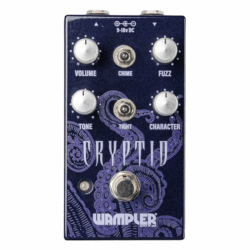
Wampler Cryptid Review
Since hitting the scene in 2007, Wampler has consistently made some of the better overdrive and distortion pedals on the market. Interestingly, though, other than 2013’s Levithan fuzz and its brazen sibling, the Fuzztration, which is a fuzz/octave pedal, Wampler’s product line didn’t feature many fuzz pedals. Since then, Brian Wampler has evolved as a pedal builder, and Wampler’s new Cryptid reflects a unique take on what a fuzz can be—employing a newly designed circuit with NPN and PNP transistors, and FETs.Wampler has described the Cryptid as a “fuzz for those who don’t like fuzz.” And certainly, it’s a versatile pedal that covers much more sonic ground than conventional fuzzes. In addition to delivering variations on familiar classic Fuzz Face, Tone Bender, and Big Muff sounds, the Cryptid can move into light overdrive or even chiming clean territory. A Fun House of FuzzThe Cryptid, despite the implied mystery in its name, is pretty forgiving. You could just set all the knobs at noon and you’d be good to go for any number of fuzz tasks and roles. But this is a fuzz of impressive potential, and every knob and switch—particularly the character knob and the tight and chime switches, and the way they interact—can profoundly reshape the pedal’s performance and feel.The character knob is a bias control that can shift the mood and responsiveness of the pedal significantly. When the character knob is fully counter-clockwise, the Cryptid is well behaved and focused. As you turn it clockwise, though, things get crazier. Once the character knob is around 2:00 you’ll start to hear sputtering textures that evoke tired, voltage-starved vintage units and more deliberately designed glitch fuzz.The tight switch lets you regulate how much bass is present in the signal and has a pretty significant impact on the tone. In the down position, it adds in a fair amount of bass. The middle position offers the least bass content and tightens up the sound, which brings out more overdrive-like colors. The up position is the ticket to maximum bass, and even with the fuzz knob set conservatively the Cryptid really is explosive and massive.The chime switch adds high end. The down position gives a little bit of chime, the middle position is relatively chimeless and has a darker quality, and the up position yields the brightest sounds. The less fuzz you apply to the signal, the more noticeable the chime effect will be. With the fuzz knob all the way counter-clockwise and the chime control switch in the up position, you get delicious, pronounced near-clean tones that fit the bill for Hendrix double stops and Stevie Ray Vaughn blues escapades.Brian Wampler’s ambitions in putting together the Cryptid—essentially encapsulating the character and tonalities associated with Big Muffs, Tone Benders, and Fuzz Faces, while leaving room for airy, cleaner tones and picking dynamics—were far-reaching. But there is ample evidence that he achieved his aims. Cryptid may not serve many purists searching for classic clone sounds, but it offers the chance to create more original sounds that have all the fire of those classics, and more polite tones to boot.
Read more »
Track Premiere: Bent Sea – “A Scopic Radiance”
Hear the latest single from All-star grindforce Bent Sea before their debut LP The Dormant Ruin is released this Friday via Give Praise Records.
The post Track Premiere: Bent Sea – “A Scopic Radiance” appeared first on Decibel Magazine.
Blast Worship: Agonized
Hear Malaysian grindcore force Agonized bring the pain via the self-released Absence of Truth.
The post Blast Worship: Agonized appeared first on Decibel Magazine.
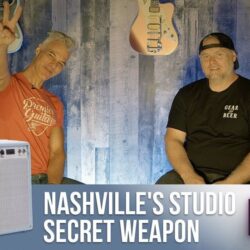
From Metal Crunch to Country Clean: The Rise of Revv Amps
John Bohlinger sits down with Revv Amps’ cofounder Derek Eastveld to trace the company’s journey from basement builds to pedal boom. And while their Generator Series fire-breathing amps and pedals started its ascent finding homes with rockers The Pretty Reckless & A Day to Remember, Eastveld explains that it might be their clean, versatile Dynamis Series gear that’s making the Canadian brand a preference for players and producers in Nashville.
Read more »
Ella Feingold and Charlie Hunter: A Rhythmic Symposium
When it comes to rhythm guitar, there are acknowledged masters—artists like Jimmy Nolen, Catfish Collins, Wah Wah Watson, Curtis Mayfield—whose work deserves deep analysis and interpretation. But the discourse on each and every one of these players is sadly thin. That’s because rhythm—especially when it’s funky—is ineffable, and it’s much easier to discuss licks, riffs, melodies, or gear than it is to talk about the give-and-take nuances that make your body want to move when you hear a song. Like Icarus and the sun, if we try to describe a groove too closely we’re setting up our demise. In the attempt to convey those truly human elements of musical performance, we not only fail, but risk rendering ourselves … unfunky.YouTubeIt’s not just words that fall short—musical notation can’t quite capture a groove either. Though it does well at communicating a composer’s intended notes and rhythms, transcribing the intricacies of feel is a task that often overcomplicates something so intrinsic to human nature to the point of illegibility. In learning from the greats of funk, soul, and r&b guitar, we simply have to use our ears as best we can.“I think we probably share like 60 to 75 percent of our musical DNA. And then the extra stuff that we have adds something to it.” —Charlie HunterFor some, that only goes so far, so we need visual aides. And that’s how most people—probably—discover Ella Feingold, the Grammy-winning guitarist breaking down the intricacies of those masters of rhythm guitar and many others on Instagram and TikTok, making some of the greatest strides yet in the education—and enjoyment—of funky feel. We’re talking deep, below-the-surface details, like pick attack and note placement—potentially nerd-level stuff that she delivers in a warm, approachable style that makes her videos so engaging and rewatchable. (In fact, if there’s one person I’ve learned the most about guitar from in the last couple of years, it is Ella.)Feingold’s rhythmic research is backed by a deep resume that spans work as an orchestrator, composer, and producer. As a guitarist, Feingold has been tapped to play alongside an impressive list of leaders that includes Erykah Badu, Silk Sonic, Bootsy Collins, and Jay-Z. Charlie Hunter is one of many who found Feingold through Instagram. After Hunter—who came up in the ’90s on Blue Note Records, famously wielding a hybrid guitar/bass instrument that set the jazz-funk scene on high alert—scrolled across Feingold’s videos, the two quickly took it to their DMs and established a friendship. Collab talks started soon after. Feingold, who has worked exclusively as a side musician save for a few classical piano pieces, jumped at the opportunity to release a record under her name alongside Hunter, who she lovingly calls “a musical hero.”
The two convened at Pilot Studios in Great Barrington, Massachusetts, with producer Alan Evans—best known as the drummer for Soulive—for a few short days to create Different Strokes for Different Folks, a rhythm symposium of the highest order. It’s a record that’s earnestly old-school by way of a simple approach: capturing a live-off-the-floor two-way conversation between singular instrumentalists. Feingold’s guitar—punchy and percussive but still delicate and detailed—lies on the right side of the stereo field throughout, communing with Hunter’s counterpoint of pulsing bass, which sits near the center, and snare-like guitar chords and knotty riffs on the left. No-frills drums, added by Hunter, pull together the sound, unifying the feel and tying the record to groove masters like Stevie Wonder and Sly Stone—the latter referenced in the album title and its opening track, “There’s Still a Riot Goin’ On.”
“Sly is just my god, my king of dark funk.” —Ella FeingoldDifferent Strokes for Different Folks is a masterwork of minimal funk: there are no solos, and melodies arise from rhythm itself. It’s an album that draws attention to the finer details of rhythm guitar, and to the communication between rhythmic elements that are often relegated to background duty. Most importantly, it’s an album that will make you feel something.
We got together with Feingold and Hunter to talk rhythm, recording, and the art of musical conversation.After first meeting on Instagram, what was the catalyst for making the record happen, and how did it come together?Ella Feingold: I’ve always been a fan of Charlie’s, obviously. Eventually, it led to just talking all the time, about rhythm and all the stuff we love that doesn’t really get discussed a lot. We had a lot in common, and at some point, he’s like, “Yeah, we should make a record together…” which kind of terrified me.Charlie Hunter: I think we probably share like 60 to 75 percent music DNA. And then the extra stuff that we have adds something to it. I have all this really old knowledge that nobody cares about, like 1920s stuff. And then I always tell people, “You want to know about this one Motown recording from 1968?” Call Ella, because she’s going to know exactly who played on that and exactly every part. Feingold: We knew we wanted to do a record together. But in terms of the drumming, we had talked about everything from programming an MPC to just having a funk box—a Rhythm King, a Rhythm Ace—to getting drummers. We had talked to Steve Jordan, and Steve was like, “I’m down.” We had talked to Questlove, Questlove was down. And I know this sounds like the douchiest thing in the world to say—because to have musicians like that that are interested in working with us is the grandest honor—Charlie and I, we just wanted the conversation to be between the two of us. We wanted the rhythm to be this mantra that feels good, that moves you to the conversation we’re having, but that’s not the forefront of the conversation.So it started with us going in, knowing that the rhythm is going to come from him and I, but not exactly sure how. And then with me programming a little bit with the MPC and playing along. Then Charlie replaced everything and killed it on drums. So Charlie’s the drummer on the record. And what I think is cool about that is we wanted it kind of like … when Sly Stone plays drums, and when Stevie Wonder plays drums, or when Lenny Kravitz, whoever, like an artist that plays their own music, does the drum part, it’s going to be exactly what it needs to be and nothing else, with no other filler, no other musicianship, no “look what I can do.” It’s going to be exactly what needs to be there. And that’s exactly what Charlie did.Hunter: Because I don’t take pride in my drumming, we wanted it to just be as basic as possible.Ella, there are so many songs you talk about on your social media that I’ve heard a million times, but you’ll show how a part goes and then I’ll hear it so differently. It blows my mind. You have such a good ear for really fine details, and I know a lot of people feel that way.
Feingold: I feel like I get too much credit. A lot of that stuff just comes from what I can’t do—meaning I don’t really solo, I don’t know modes, I don’t really know a lot of scales. There’s so much I don’t know. My ear just goes to the place that makes my ear happy.
I think some of it has come from being on the road in the early 2000s, when there were no stems, no stem-making software, there wasn’t really social media. You had to learn a show from a rehearsal CD or an MP3 and had to pick out guitar parts. You really had to do this kind of deep listening to try and hear stuff.“If you have a good feel and something to say and a lived experience, you got this.”—Ella FeingoldThere are two references to Sly Stone on the album—the title is a lyric from “Everyday People,” and the song “There’s Still a Riot Goin’ On” is a hat-tip to Sly’s 1971 record.
Hunter: That’s Ella’s department. She is a Sly-o-phile.
Feingold: Sly is just my god, my king of dark funk. You obviously have George Clinton and James Brown, but something about Sly, for me, it’s just the greasiest, most raw, tasteful … it’s something that just hits me in the chest. A lot of my musical aesthetic was from Sly and from him playing all the instruments. And then all the music I adore—D’Angelo and J Dilla and some Prince—it all comes from Sly.
If I can get political, I’m a trans woman, and we did that album in February, a month after the inauguration, after Trump was going after trans people, taking away life-saving medicine and hormones and fucking with our passports and all kinds of stuff. And I felt a lot of turmoil. So going into the record, it just felt like there was a riot going on—externally in the world and internally within. And I just wanted some of that to be reflected in the conversation. Not just because I love Sly and the Sly references. Certainly “different strokes for different folks” came out of the lyrics, but it’s cool because “different strokes” can also be referring to Charlie’s stroke and my stroke on the instrument, and there’s also the Muhammad Ali reference—knocking people the fuck out.Tell me about the guitars you used on the record, and the tunings.Feingold: I used a Mexican Strat in inverted tuning—it’s E–A–D–G–B–E, but it’s high to low, not low to high, so familiar voicings become distant relatives. Where did the inverted tuning come from?Feingold: From my buddy Blake Mills [who learned it from Chris Weisman]. I even have the text message where he said, “I’m about to change your life.” For me, the appeal was it gave me the rhythm sound I wanted in terms of attacking the high strings first. And the tuning felt a little familiar, because it’s related to standard. Although anything above a triad, the overtone series sort of gets put on its head—all the color tones are on the low strings and all the roots and thirds are on the high strings. But it opened up this whole new world of harmony that was like Claus Ogerman harmony—close position stuff you’d hear Nat King Cole or George Shearing play. What I love is it’s sort of similar to Charlie’s whole journey, which he took long before I did, of, “What does this thing want to be?” And then finding a sound with it.“The first time we played, I was like, ‘This sounds like a gigantic lawnmower guitar that can take buildings down.’” —Charlie HunterHunter: I think there’s also something really special that happens because of Ella’s inverted tuning and the fact that it’s basically in E, while my hybrid tuning is basically an F. Every tune, we each have a different set of open notes and a different overtone series that makes the instruments do this really cool shimmery thing together. The first time we played, I heard that and I was like, “This is dope. This sounds like a gigantic lawnmower guitar that can take buildings down. All right, let’s go do this.”Charlie, your journey with your instrument has been well documented at this point, but catch us up a little bit.
Hunter: I started on this 8-string guitar, and that was really a bad idea. And I made a bunch of records on it. I just was like, “Hey, Ralph Novak [of Novax Guitars], can you make this? I have an idea. Could be cool.” Never thinking this was going to be my career. Before I knew it, I had a deal with Blue Note. And then I’m like, “My god, I can’t really do this very well. It’s so hard. What am I doing?” It took me years to figure out, “What does this instrument want to do?”
So I hooked up with Hybrid Guitars and I settled on this thing I’m calling the Big 6. What this instrument does best is really more like a drum set, where you have bass and guitar and it’s all about the counterpoint. It has an extra long scale—the lowest string is 31 inches and the highest is 28.
I have it tuned F, Bb, Eb—which are the lower three strings of a bass, up a half-step—which sends me into a hell of transposition, but sounds so much better than E. And the guitar [side] is Bb, Eb, Ab, which is essentially A, D, G up a half-step.Ella Feingold’s Gear GuitarFender Jimi Hendrix Stratocaster with Fender Custom Shop Fat ’60s pickups and inverted tuningAmp1968 Fender Princeton ReverbEffectsEnsoniq ASR-10 used for envelope filter Strings and PicksLa Bella inverted tuning custom signature set (.046 E; .032 B; .017 G; .026 D; .016 A; .011 E)D’Addario Ukulele 3.0 mm Charlie Hunter’s GearGuitarHybrid Guitars Hybrid 6 (aka Big 6)AmpTwo-Rock Studio SignatureAmpeg B-15Acme Audio Motown DIEffectsSurfyBear Compact DeluxeStringsThomastik-Infeld Jazz Flat Wound (bass side)Thomastik-Infeld Pure Nickel Round Wound (guitar side)What was the biggest revelation that came from working together?
Hunter: For me, it’s just that we have a great time playing together, and I just learned a ton, you know? And if I can take that away from any situation, it’s a win.
Feingold: The gift of working with Charlie is it gave me the confidence to make my own music. Because I’ve spent my entire career helping other people with their music, playing on their records or producing. I’ve never invested in my own music because I always thought you have to make your own, like, Pet Sounds or Sgt. Pepper’s—you’re going to be working, writing for years. And it was like, we went in there, we had some ideas over a couple of months, and it turned into over an hour of music.
And it just was like, “Wow, I’m overthinking this stuff like crazy.” If you have a good feel and something to say and a lived experience, you got this. That was kind of an unexpected gift. After Charlie and I finished mixing the record, I bought a four-track and I made an EP. I was really inspired by just being around Charlie.
So if you have something to say in the moment, that’s it. That’s the most important thing.
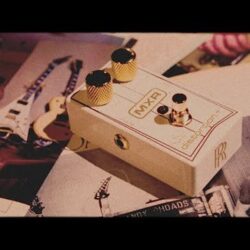
Dunlop Releases Special Edition of Randy Rhoads MXR® Distortion+
Last year, we released the MXR Randy Rhoads Distortion+, a pedal that celebrates Randy Rhoads’ revolutionary contribution to rock ’n’ roll guitar playing. The original MXR Distortion+ was a key part of his riveting sound, and our MXR engineers worked directly with sister Kathy Rhoads to ensure that this tribute would be equipped with all the components necessary to accurately recreate that sonic signature. The first run sold out quickly, leaving fans clamoring for another chance at those iconic tones. And now, it’s back.The Randy Rhoads MXR Special Edition Distortion+ features a clean white finish with pinstripe accents, inspired by the iconic Flying V-style guitar that Randy designed after flying on a famous supersonic airliner while touring with Ozzy Osbourne.Randy Rhoads MXR Special Edition Distortion+ highlights:A tribute to the monumental legacy of Randy RhoadsRecreates the raw, overdriven tones heard on his most beloved hitsPainstakingly spec’d from Randy’s own MXR Distortion+Designed with the direct involvement of sister Kathy RhoadsCustom finish inspired by his supersonic V-inspired guitarIncludes exclusive collector’s bookletAvailabilityThe Randy Rhoads MXR Special Edition Distortion+ is available now at $189.99 street/$271.41 MSRP from your favorite retailer.
Read more »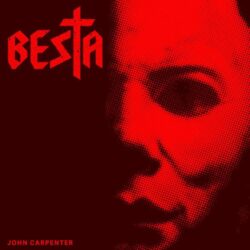
Track Premiere: Besta – “Estrela Negra”
The beast is back. Portuguese grindcore crushers Besta re-visit their 2014 homage to John Carpenter, with a fresh mix and new vocals on “Estrela Negra.”
The post Track Premiere: Besta – “Estrela Negra” appeared first on Decibel Magazine.
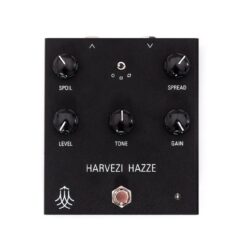
SOMA Harvezi Hazze Review
Any distortion pedal with white text on a matte-black finish is going to draw comparisons to Pro Co’s beloved rodent, the RAT, but SOMA Laboratory’s Harvezi Hazze offers a much more versatile brand of distortion. It’s a smartly designed, do-it-all transistor distortion and waveshaper—a function that changes waveforms from, for instance, sine, to square, to triangle, altering the output significantly. Together, the Harvezi Hazze’s circuit and interactive controls summon many unusual tones that go beyond simple distortion. Spoil Sport Harvezi Hazze’s three lower knobs—level, tone, and gain—need little description. Up top, though, there’s a switch for selecting from soft-clipping, hard-clipping, or “total feedback mode,” as well as knobs labeled spoil and spread. Spoil sets the amplitude threshold at which the waveshape change takes place, and spread sets the intensity. These two knobs, and the interplay between them, are the beating heart of Harvezi Hazze, and the key to unlocking the most unusual dirt.A suite of six switches on the side of the enclosure greatly expands the Harvezi Hazze’s palette. From first to last, they activate the tone circuit, boost bass frequencies, change how the tone knob functions, change the central frequency of the tone sweep, cut highs, and engage a preset compressor situated just after the input. Jams from GeorgiaThe Harvezi Hazze’s wavehaper is based around unijunction transistors sourced from e-waste bins at flea markets in Tbilisi, the capital of the nation of Georgia. (The pedal’s Georgian name roughly translates to “a fault on the transmission line” or “signal jamming.”) The obscure transistors help the Harvezi Hazze cover tones from gentle distortion mixed with clean signal to warped, sputtering mayhem. In my testing, I discovered so many fascinating, musically pleasing sounds that I was stumped at how they all fit into one dirt pedal. The engineers at SOMA turned an impressive magic trick with this one.At times when I wanted heavier and dirtier sounds from the Harvezi Hazze I found that tweaking the spoil and spread settings, while altering with the tone knob, can squeeze much more aggressive and volatile sounds from the pedal. There is one drawback to all this versatility: Because the controls are all so interactive, small adjustments can leave you wondering where one sound went and how you arrived at the latest one, and the lack of presets means you’ll be taking lots of photos of your settings if you want to revisit them.The Verdict$336 for a distortion pedal is a big ask, but in terms of flexibility and range of possible sounds, Harvezi Hazze is up there with the most deeply featured distortion units on the market, and there are boutique offerings in this price bracket that deliver a tenth of what this pedal can accomplish. In the studio, you could track 10 different guitar parts with totally unique sonic fingerprints, all with the Harvezi Hazze. For the right players and producers, this pedal could be a one-stop tone shop, and a studio staple.
Read more »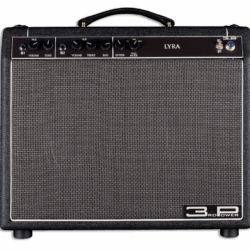
Introducing the LYRA: Two Legends. One Amplifier.
3RD POWER unveils the LYRA, a handcrafted tube amplifier that unites the voices of two of the most iconic amps ever made—the 1962 Deluxe and the 1965 Deluxe—in a single, elegantly designed package available in head format as well as 112 combo.Built for players who demand authentic tone and uncompromising versatility, the LYRA allows guitarists to step seamlessly between the warm, raw character of the early ‘60s and the refined clarity of the mid-’60s. With meticulous attention to detail, premium components, and vintage-inspired craftsmanship, this amp captures the soul of two eras while offering modern reliability and transportability. In use, each signal path is pure tube, focussed and effortless. Plug into either channel, or access them both with your favorite AB-Y pedal, and it feels alive – responsive to every touch, every note, as well as every silence. Tube driven spring reverb and our patented VenueMode attenuator are built in and round out the features.”The LYRA is about honoring history while inspiring new sounds,” says amp designer, Dylana Scott. “On stage or in the studio, it’s like having two timeless classics by your side,—ready at the flick of a switch.”The LYRA is now available in limited release.LYRA Features:Head or 112 Combo Versions Available’62 DELUXE Voice on Channel One’65 DELUXE Voice on Channel TwoTube driven Spring Reverb on boardDual 6V6 Power TubesPatented VenueMode™ Built-in Attenuator (20W/12W/5W modes)Custom Wound USA-made Power & Output Transformers by HeyboerHand-wired and Hand Built in Minneapolis, MNLimited Lifetime WarrantyPricing for LYRA is around $2799 (head version) and $3299 (112 combo). For more information, please visit www.3rdPower.com.
Read more »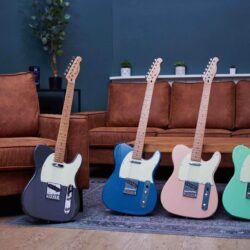
Tonewood Teardown: How Good Can a Cheap Guitar Sound?
Hello, and welcome back to Mod Garage. This month, we will start our custom-shop experiment with a very cheap electric guitar and see how far we can push it, customizing each and every little detail to see if the wood is really important regarding the amplified tone of an electric guitar.Basically, we will be putting high-quality parts into an extremely cheap guitar to see what will happen. The idea behind it is very simple: If the wood plays a major role in the amplified tone of an electric guitar, our cheap guinea pig can’t sound any good, no matter what we do. However, if it’s really all about the pickups, electronics, internal wires, guitar cable, strings, and, of course, the individual playing style, the cheap guitar has the potential to sound fantastic. (Another interesting experiment would be to put cheap pickups, electronics, wires, etcetera, into a high-end custom shop electric guitar, and see what happens!)“This is the perfect guinea pig for our experiment because it sports a lot of features that are considered ‘bad’ for the tone of a guitar.”You may remember the thesis from the last issue: The more solid an electric guitar is built, the less influence its primary structure has on the amplified tone. So to get this challenge started, I decided to use a Telecaster-style guitar, thanks to its very solid construction. I got a Harley Benton TE-62CC model from Thomann for $148 including shipping. It was delivered in a nice vintage seafoam green color. That’s a complete guitar for less than the price of a good pickup set, so what can we expect from it? It was important for me that the guitar wasn’t pre-selected, so I asked for a randomly picked instrument out of the pile, with the stipulation to not open the box and send it directly to someone else rather than to me so you can be sure I had no chance to do any work on this guitar. A big shout-out to Benedikt from Harley Benton to make all this happen.The guitar was shipped directly to my friend and colleague Haiko Heinz, who is not only a professional guitarist and teacher but also a renowned gear tester and columnist for the German online mag Bonedo. Haiko runs his own gear-review channel and has made countless gear-testing videos, so you can be sure that over the years he’s had his hands on virtually everything with 6 strings. I asked Haiko if he would make a “before video” of the guitar and he agreed; you can watch Haiko playing the guitar here. (After my work is done, I will ship the guitar back to Haiko and he will make another video to compare it with the stock factory condition.)After finishing the first video, Haiko sent the guitar to me, and I have to say that, considering the price, I was really impressed with the quality. It’s a standard vintage-flavored Telecaster, and the plan is to completely take it apart down to the last screw, analyse each and every little detail, and transform it into a much better guitar in terms of playability, comfortability, longevity, appearance, and, of course, tone. My goal is to keep the budget under $500, including the guitar, so I’ll be using a mix of new and used parts for our remaining $352. Let’s see how far we can get with this.The entire procedure is not set in stone. It’s just one possible way to do such a project, and certainly not the only way. I want to keep it as transparent and easy as possible so you can follow along, step-by-step, if you have a guitar you want to spruce up.So what can we expect from a guitar at this price? We can be sure that we’ll find some flaws and signs of cost-cutting under the high-gloss hood. This is the perfect guinea pig for our experiment because it sports a lot of features that are considered “bad” for the tone of a guitar. Here are the most prominent of them; we will talk about all of these in detail during this series.• The body is made out of basswood, which is not a classic tonewood.• The body is made out of multiple pieces of wood.• The body is not nitro lacquered but has an ultra-thick polyurethane finish, which we all know is killing tone because the wood of the guitar can’t breathe and resonate freely.• The “1-piece” maple neck is not one piece and has a glued-on maple fretboard, which is not vintage correct, and lessens high-end and attack.• The guitar is really lightweight so it’s not very loud and doesn’t sustain well.• It comes with thin strings which have less sustain and thinner tone.We can’t change the primary construction of the guitar (i.e. the wood used for its body and neck), so through the course of our mods we’ll see how much these things matter to a guitar’s tone. I’ll even install some lighter-gauge strings to really start from the lowest possible point tonewise—at least, according to Common Internet Guitar Knowledge (CIGK).After playing the guitar for a while and thinking about what to do with it, I decided to transform it into a single-pickup Esquire-style model, because less is often more. We will talk about the differences between a 2-pickup Telecaster and a single-pickup Esquire in detail and you will see it’s not the same tonewise.If you’re following along with one of your own guitars, your exercise for this month is to completely take it apart. I will do the same with my Harley Benton so we have the same starting point. Next month, we will start to work on the guitar, defining what to do and making some plans on how to proceed. The custom-shop game is open now, so stay tuned!Until then … keep on modding!
Read more »